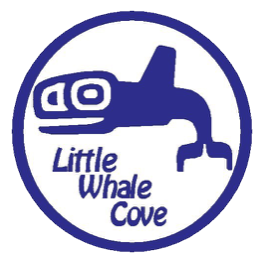“Careful planning and development have kept the magnificent oceanfront acres of Little Whale Cove as natural as possible, with no polished or manicured look, and with a low structure density.”
We live in a temperate rain forest and a unique coastal cliff environment. These distinctly different ecosystems produce some of the highest amounts of biomass and some of the lowest amounts of biomass of the various ecosystems found along the Oregon coast. Trees and vegetation grow, and also support a diverse variety of animal species. Sunlight, water and soil conditions also play a significant role it what grows here, how fast it grows, and how often or not tree and vegetation natural growth patterns should be “managed.” Little Whale Cove believes that a “one size fits all” concept does not work will in Little Whale Cove. Rather, qualitative standards should be implemented along with quantitative standards as part of our long-term strategic maintenance plan.
Our maintenance standards must be suitable to achieve sometimes conflicting objectives. Vegetation is often used for privacy around residences, but is also used to make our traffic islands more visually attractive. Height/size standards are clearly different for these two instances, and must be considered in our maintenance planning. Visual safety is an important consideration at street corners and around traffic islands, so trimming standards are likely to be the most restrictive and should occur regularly. But away from traffic-sensitive areas, trimming should be less frequent in scope and frequency in order to preserve the more natural look of our common areas, and contributing to visual and noise barriers for homeowner privacy.
In order to meet these challenging maintenance differences, the Board of Directors has developed an Action Plan driven Maintenance Program to specifically address maintenance projects that fall outside of the normal daily routine maintenance.
The following approved Maintenance Action Plans have been approved by the Little Whale Cove Board of Directors and are currently underway, or scheduled to begin in the immediate future:
A general maintenance project which will include limbing of trees in the vicinity of the Recreation Center Complex, reduction of size and height in understory vegetation, e.g.. Salal, and grasses, the addition of new understory plant material, e.g. Rhododendrons, Huckleberry, Sword Ferns and Oregon Grape. Additionally, rip/rap (rock) will be added to permit better drainage around the Recreation Center building and drainage ditches and culverts.
For additional details and information, click on the project name above, to be redirected to the approved Maintenance Action Plan.
A general maintenance project which will include limbing of trees and the removal of a limited number of dangerous and/or failing trees, reduction of understory vegetation height/size and renovation pruning in specific areas noted in the Maintenance Action Plan, in and around Lot TP02.
For additional details and information, click on the project name above, to be redirected to the approved Maintenance Action Plan.
A general maintenance project which will include the limbing and removal of a limited number of failing trees, reduction and relocation of understory vegetation in specific areas and the addition of low growing native vegetation in specific areas noted in the Maintenance Action Plan. The purpose and intent of this project is to increase and enhance the visibility at the intersection for the safety of pedestrians and vehicles entering and leaving the Innisfree neighborhood.
For additional details and information, click on the project name above, to be redirected to the approved Maintenance Action Plan.
